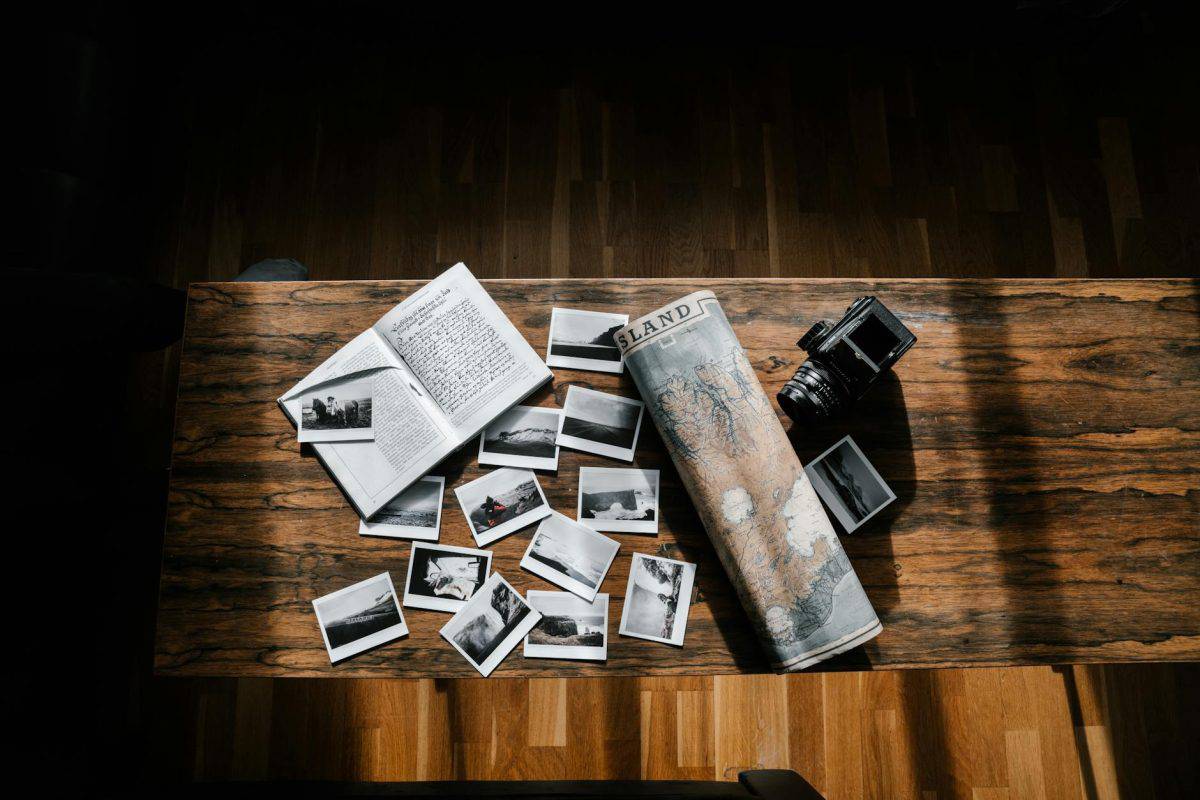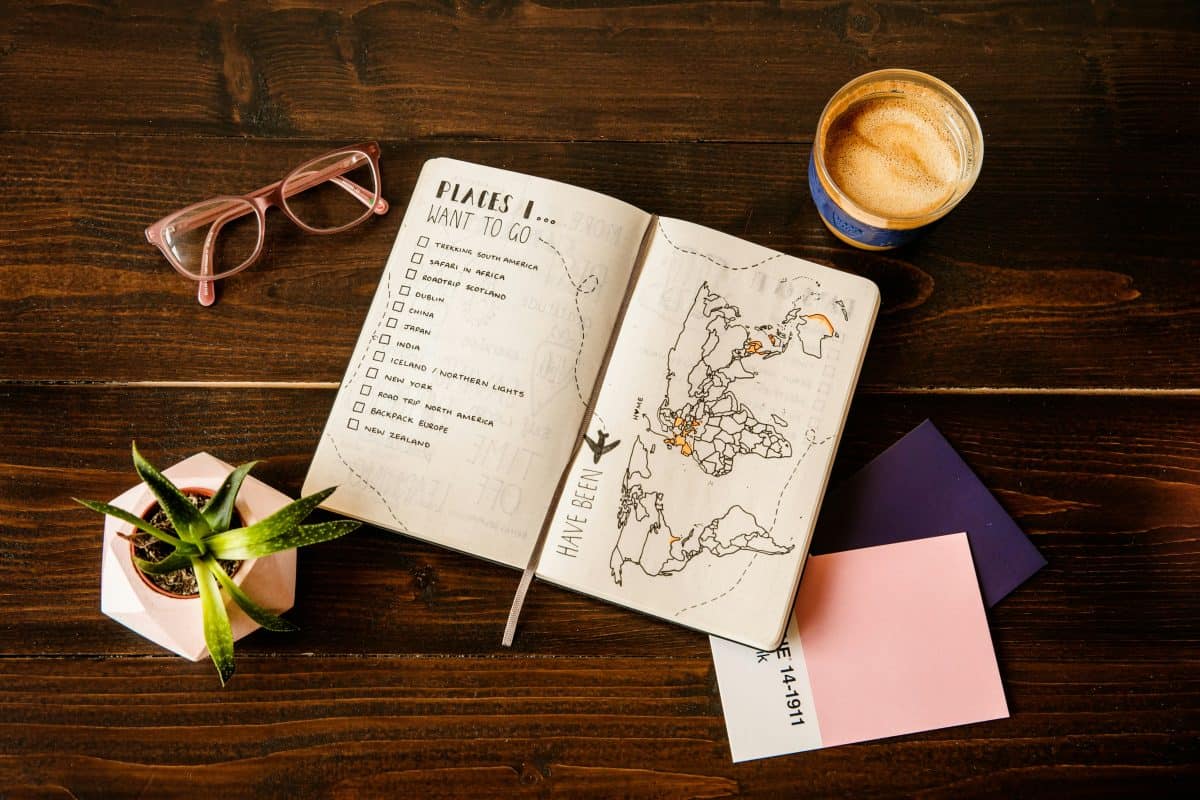Creating a travel journal is both a rewarding and fun activity that allows you to capture and preserve unforgettable memories. To get started, it is essential to choose the right journal considering the size, material, and format that best suit your needs. Several types of journals are available on the market, each offering unique features to cater to different preferences.
The essential supplies include pens, pencils, and watercolors to add personal and artistic touches. Practical accessories like adhesive pockets and labels allow you to further personalize your journal.
To fill your journal, capturing key moments with detailed descriptions is essential. Using sketches and drawings further illustrates your experiences, while adding tangible souvenirs like transport tickets or postcards enriches your narrative. Creative journaling techniques such as collages and lettering diversify the appearance of your journal even more.
Plan before your departure by organizing sections and planning necessary pages. Writing regularly during the trip helps you remember everything, and reviewing your notes afterward to add details enriches your initial memories. Sharing your memories on digital platforms and social networks can inspire other travelers.
Drawing inspiration from the journals of famous travelers or exploring popular themes such as nature, culture, or gastronomy can make your journal even more memorable. The personal stories of other travelers and additional resources available online offer further creative avenues. Creating a travel journal is not only a way to document your adventures but also a form of personal expression that can transform into a true work of art.
The essential tools to start your travel journal
Choosing the right journal: size, material, and format
The choice of journal is a key step to get started. The size of the journal depends on your preferences and how you plan to use it. A small journal is practical for quick notes and sketches on the go, while a large format provides more space for detailed descriptions and illustrations.
The material also plays an important role. Thick paper journals are perfect for watercolor drawings and collages, while those with thin paper are better suited for simple written notes. The format can vary between spiral-bound journals, which make adding pages easier, and bound journals, which offer a neater and more durable appearance.
| Feature | Options |
|---|---|
| Size | Small, medium, large |
| Material | Thick paper, thin paper |
| Format | Spiral, bound |
The types of travel journals available on the market
There are several types of travel journals, each with its specific advantages. Hardcover journals better protect your pages and are more shock-resistant. Softcover journals are lighter and more flexible, ideal for travelers who like to travel light.
Journals with lined pages facilitate long text writing, while those with blank pages are perfect for drawings and sketches. Dot grid journals offer a good compromise for those who want some structure while maintaining flexibility.
Essential supplies: pens, pencils, watercolors, and more
To fill your journal well, several supplies are necessary:
- Pens: Use black or blue ink pens for clear and legible writing.
- Pencils: HB or B pencils are perfect for initial sketches.
- Watercolors: They add an artistic and colorful touch to your pages.
- Markers: Prefer fine-tipped markers for details.
These elements allow you to express your ideas in different forms and colors.
Practical accessories to personalize your journal
Personalizing your travel journal makes it unique and even more valuable. Here are some practical accessories:
- Adhesive pockets: Perfect for storing souvenirs like tickets or postcards.
- Labels: To organize your sections or add attractive titles.
- Stickers: They add a playful and decorative touch.
These accessories allow you to adapt your journal to your specific needs while adding an aesthetic dimension.

Ideas for filling out your travel journal
Capturing key moments with detailed descriptions
To make your travel journal lively and immersive, it’s crucial to capture key moments through detailed descriptions. Note the sensations, smells, colors, and sounds surrounding each experience. Describe the landscapes, meetings, and the emotions you feel. The more precise your descriptions, the easier it will be to relive those moments later.
An example of a detailed description:
“ The sun sets behind the mountains, casting a golden light on the crystal-clear lake. The birds sing softly while the cool breeze caresses my face.”
Using sketches and drawings to illustrate your experiences
Sketches and drawings add a unique visual dimension to your journal. You don’t need to be a professional artist to create meaningful illustrations. Simple sketches can suffice to capture the essence of a place or moment. Use pencils, pens, or watercolors to draw landscapes, monuments, or scenes from everyday life.
Letting your creativity flow enriches your journal and offers a different perspective on your travels.
Adding tangible souvenirs: tickets, postcards, and photos
Incorporating tangible souvenirs into your journal adds a personal and authentic touch to your narratives. Stick in transport tickets, postcards, or photos. These elements provide physical proof of your adventures and add an interesting texture to your journal.
For example:
- Airplane or train tickets
- Postcards sent by friends or purchased on-site
- Printed photos of memorable moments
These material additions strengthen the emotional bond with your memories and make your journal even more valuable.
Creative journaling techniques: collages, lettering, and more 😍
Creative journaling transforms your travel journal into a true work of art. Use techniques such as collage to assemble various visual elements. Artistic lettering adds style to your titles and subtitles, giving a professional look to your pages.
Some creative techniques:
- Collage: Combine different images, papers, and materials to create unique compositions.
- Lettering: Experiment with different fonts and writing styles to customize your titles.
- Doodling: Add small drawings or patterns around your texts to decorate your pages.
These methods stimulate your imagination and make each page unique, turning your journal into an authentic reflection of your adventures.
Videos
HOW TO MAKE A TRAVEL JOURNAL?
ACTIVATE THE LITTLE BELL TO STAY UPDATED ON NEW VIDEOS ☆ My Instagram: …
DIY your travel journal | tutorial, create, drawings & tips ✏️🎨
Have you always dreamed of creating your travel journal but don’t know where to start? In this tutorial, I will show you …
Getting the most out of your travel journal
Planning before departure: organizing sections and planning pages
Before leaving, planning your travel journal allows you to structure your memories and optimize space. Define sections for each stage of the trip: transport, accommodation, activities, meetings, etc. Also plan dedicated pages for sketches, collages, and free notes.
For example:
- First section: Itinerary and planning
- Second section: Impressions of the visited places
- Third section: Meetings and anecdotes
This organization helps you stay consistent and not forget anything. Good preparation is key to a well-filled and enjoyable journal.
Writing on the go: tips for writing regularly during the trip
To write regularly during the trip, adopt some simple tips. Always carry your journal with you to jot down immediate impressions. Use waiting moments (transport, coffee breaks) to write a few lines. Set small daily goals, such as describing a situation or sketching a landscape.
Some ideas:
- Take 10 minutes every evening to summarize your day
- Note your impressions as soon as you visit a new place
- Make quick sketches during breaks
Writing on the go captures the essence of the moment and keeps your memories fresh in your mind.
Reviewing and adding details afterward: enriching your initial notes
Once back, take the time to read and enrich your initial notes. Add details you might have forgotten at the moment. Sticking in photos or tangible souvenirs can also complete your narratives. Rereading your detailed descriptions can also revive memories and offer a different perspective.
Examples of additions:
- Additional details about a memorable meeting
- Personal reflections on an experience
- Visual elements like maps or diagrams
This step allows you to refine your journal and turn it into a true personal treasure.
Sharing your memories: digital transformation and social media
Sharing your memories with the world can be very rewarding. Digitize your journal by scanning pages or taking high-resolution photos. Use social networks like Instagram or Pinterest to publish your works and inspire other travelers. Create a blog or online album to gather all your adventures in one place.
Some popular platforms:
- Instagram: Share photos with inspiring captions
- Pinterest: Create thematic boards
- Personal blog: Write detailed articles with included images
The digital transformation allows you not only to keep a digital copy of your journal but also to reach a wider audience with your fascinating stories. 🎉

Inspirations and examples for a memorable travel journal
Examples of journals from famous and inspiring travelers
Exploring the journals of famous travelers can provide invaluable inspiration. Figures like Christopher Columbus or Marco Polo left fascinating accounts of their journeys. More recently, authors like Bruce Chatwin with “In Patagonia” or Ernest Hemingway with his notes on Spain and Africa offer journals rich in details and emotions.
These examples show how to capture the essence of an adventure through detailed descriptions, sketches, and personal reflections. They can encourage you to experiment with different techniques in your own journal.
Popular themes: nature, culture, adventure, and gastronomy
Choosing a theme for your travel journal can help structure your narratives and give coherence to your pages. Here are some popular themes:
- Nature: Capture the beauty of the landscapes, wildlife, and flora that you encounter.
- Culture: Note your impressions of local traditions, festivals, and customs.
- Adventure: Document your extreme activities like hiking, surfing, or paragliding.
- Gastronomy: Describe typical dishes, food markets, and your culinary discoveries.
These themes allow you to focus your observations and make your journal more captivating.
Personal stories and testimonies from other travelers
Personal stories and testimonies from other travelers offer a unique and enriching perspective. Reading authentic accounts allows you to discover aspects of travel you may not have considered. For example, blogs like Nomadic Matt or The Blonde Abroad are filled with instructive and inspiring anecdotes.
Their testimonies can guide you in structuring your own narratives and expressing your emotions. You may also find practical tips to enhance your journal.
Additional resources: blogs, videos, and online communities
To go further in creating your travel journal, several online resources are available:
- Blogs: Many bloggers share their techniques and tips for keeping a travel journal. Visit sites like “Travelogue” or “The Travel Hack”.
- Videos: YouTube channels specializing in travel offer tutorials on creative journaling. Check out channels like “Sea Lemon” or “My Life in a Bullet”.
- Online communities: Joining forums or Facebook groups dedicated to travel journals allows you to connect with other enthusiasts. Share your creations, ask for advice, and find inspiration.
These resources enrich your creative process and allow you to discover new methods for documenting your adventures.
A memorable journey at your fingertips
Creating a travel journal is an adventure in itself, full of creativity and discoveries. By choosing the right tools, capturing key moments thoughtfully, and using various techniques, each page becomes a treasure. Planning your journal before departure and filling it regularly during the trip ensures that nothing is forgotten. Once back, enriching your notes and sharing your memories extends the experience.
Drawing inspiration from the journals of famous travelers, exploring captivating themes, reading authentic testimonies, and utilizing online resources opens a world of possibilities. Your travel journal thus becomes not only a collection of memories but also a personal work of art to cherish for years to come.


